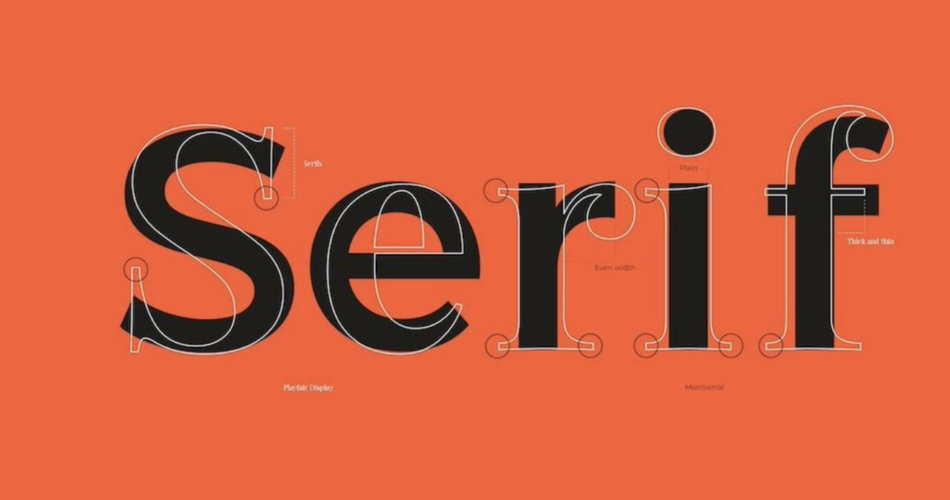Typography, the art of arranging type to make written language legible and visually appealing, has a profound impact on communication and design. Among the diverse range of font styles, sans-serif fonts stand out as a symbol of modernity, simplicity, and functionality. In this digital age where information is conveyed through screens, sans-serif fonts have become an essential tool for conveying messages with clarity and elegance.
Contents
Defining Sans-Serif Fonts: A Brief Overview
Sans-serif fonts, as the name suggests, lack the small decorative lines at the ends of characters called “serifs.” These fonts are characterized by clean, straight lines and uniform stroke widths, which give them a sleek and minimalistic appearance. The absence of serifs contributes to their modern and streamlined look, making them an excellent choice for both digital and print media.
Historical Evolution
The history of sans-serif fonts dates back to the 18th century, but they gained prominence in the 19th century as a response to the ornate and intricate serif typefaces that were prevalent at the time. Early sans-serif fonts were often used for display purposes, such as headlines and advertisements. However, it was the Bauhaus movement in the early 20th century that truly embraced sans-serif fonts, incorporating them into architecture, graphic design, and various other artistic forms.
Key Characteristics
- Clarity and Legibility:Sans-serif fonts are widely recognized for their readability, especially at smaller sizes and on screens. The absence of serifs reduces visual clutter, making them suitable for conveying information clearly.
- Modern Aesthetics:The clean and sleek appearance of sans-serif fonts conveys a sense of modernity and professionalism. Their simplicity allows them to adapt well to various design contexts, from corporate branding to website interfaces.
- Versatility: Sans-serif fonts come in various styles, from geometric to humanist, allowing designers to choose a style that aligns with the mood and purpose of their project.
- Digital Compatibility:In the digital realm, where screens and devices vary widely in size and resolution, sans-serif fonts often maintain their legibility better than serif fonts. Their straightforward shapes ensure that characters are easily distinguishable, regardless of the display medium.
Applications in Design
Sans-serif fonts find widespread use across diverse design applications:
- Web Design:The web thrives on quick information consumption. Sans-serif fonts are a staple in web design due to their legibility and adaptability to different screen sizes.
- User Interfaces:In designing user interfaces for applications and software, sans-serif fonts are favored for their clarity in presenting essential information and navigation elements.
- Editorial Design:While traditional print media often employs serif fonts for body text, sans-serif fonts are used in editorial design for headings, subheadings, and captions to create visual hierarchy and contrast.
- Branding and Logos:Many renowned brands adopt sans-serif fonts for their logos and branding to convey a contemporary and trustworthy image.
- Advertising:Sans-serif fonts are frequently chosen for advertising campaigns to grab attention quickly and communicate messages concisely.
Notable Sans-Serif Fonts
- Helvetica:Perhaps the most famous sans-serif font, Helvetica’s neutrality and clarity have made it a timeless choice in various design contexts.
- Arial:Often compared to Helvetica, Arial is a widely used font in both print and digital media due to its straightforward design.
- Roboto:Developed by Google, Roboto is designed for optimal readability on screens and is commonly used in Android applications.
- Futura:Known for its geometric forms, Futura exudes a sense of modernism and has influenced countless designs since its creation in the 1920s.
- Gill Sans:A humanist sans-serif font with a touch of elegance, Gill Sans has been a favorite for a range of applications, from books to posters.
In Conclusion
Sans-serif fonts have ushered in a typography revolution, transforming how we perceive and communicate information. Their simplicity, clarity, and adaptability have solidified their place in modern design practices. As we continue to navigate the digital landscape, these fonts will remain invaluable tools for conveying messages effectively while maintaining an air of contemporary elegance.
